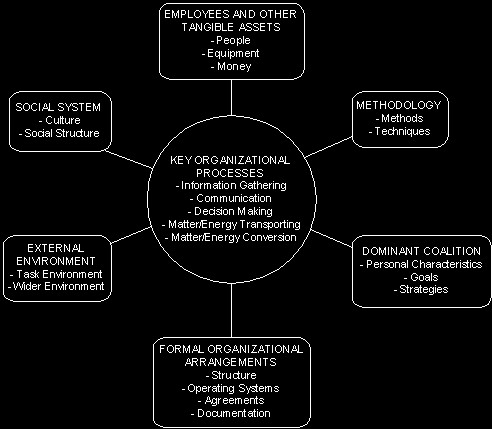|
Introduction to Organizational Dynamics
|
|
Today’s managers are faced with a general situation that has been continuously becoming more complex: organizations grow, develop new products, offer new services, acquire additional technologies.
They often must deal with sophisticated competitors and more government interventions.
This complexity makes it less and less obvious how healthy or sick the organization is.
This is not to say that to understand an organization, or to be able to help an organization to improve its effectiveness, one needs comprehensive answers to many questions.
What is needed is sensitivity to the potential relevance of interactions of specific elements and variables.
The model of organizational dynamics is made up of seven major elements:
1 – Key organizational processes
2 – External environment
3 – Employees and other tangible assets
4 – Formal organizational arrangements
5 – Internal social system
6 – Organization’s tecnhiques
7 – Dominant coalition.

It is also useful to understand and distinguish patterns of such interactions in the three time frames:
• the Short Run – six days to six months with key factors as two types of cause-and-effect dynamics in conjunction with the current states of the seven elements ;
• the Moderate Run – six months to six years with key factors as relationships – aligned or non-aligned – between the structural elements, in conjunction with the short-run factors; and
• the Long Run – six years to six decades with key factors as driving force and the adaptability of the structural elements, in conjunction with the other moderate- and short-run factors.
The presented model of organizational elements is essentially descriptive: it only describes organizational dynamics but it does not tell us about
Organizational Effectiveness.
|
|